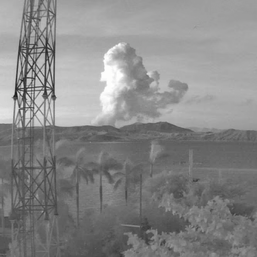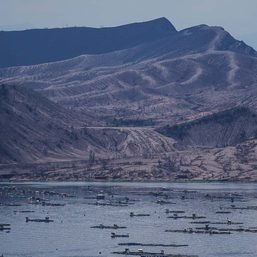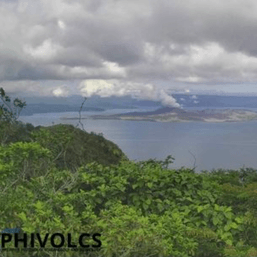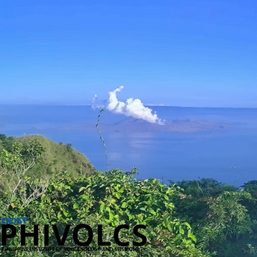SUMMARY
This is AI generated summarization, which may have errors. For context, always refer to the full article.
MANILA, Philippines – Philex Mining Corp chair and CEO Manuel Pangilinan urged government to subject small-scale miners to the same regulations and sanctions as large-scale miners.
In a press release sent out by Philex on Thursday, March 22, Pangilinan blamed small-scale mining for health-related and safety concerns, exploitation of women and child workers, absence of livelihood plans and post-mining rehabilitation issues. He said tougher regulation of small-scale miners should put an end to exploitation, health and safety concerns and post-mining rehabilitation issues plaguing the industry.
“These miners operate freely and thrive without being subjected to the regulation and sanctions imposed on large-scale mining. The solution is to subject small-scale miners to the same regulations and sanctions for large-scale mining,” Pangilinan said.
Pangilinan also said national and local policies on mining need to be harmonized and the cooperation of the local government units are needed for the enforcement of the law.
Legal limbo
The law defines small-scale mining as “artisanal” as well as relying heavily on manual labor. In practice, however, many so-called small-scale mining companies also use heavy equipment.
It was primarily conceptualized as a way to generate livelihood in resource-rich communities. Regulation of this sector has been largely problematic over the years because, while large-scale miners are regulated by Department of Environment and Natural Resources (DENR) through the Mines and Geosciences Bureau (MGB), the local government code vested the power to grant small-scale mining permits to local government units.
Part of the problem, some legal experts say, are laws that unduly restrictive and condemn as lawbreakers many genuine small-scale miners who no longer fit the definition. (Read: On Shaky Ground, a story concerning small-scale mining in the Philippines previously published by Newsbreak.)
The Diwalwal mines in Compostela Valley is an extreme case of small-scale mining gone haywire. More recently, uncontrolled small-scale mining in Pantukan town, also in Compostela Valley, rendered a mining site vulnerable to a landslide that left at least 25 dead in January 2012.
Big is better?
Pangilinan said there are enough laws in the country to address concerns in the mining industry insofar as environmental protection and social welfare are concerned but the problem has always been on the enforcement of these laws.
“I admit that our industry is not perfect and could benefit from improvements. Unfortunate incidents have happened, even to large mines, which lead to a perception that mining is dangerous and destructive. But the mistakes of the few should not be construed that the whole is wrong,” he said.
The Philex official said there is an urgent need to grow the mining industry “so that it creates more value-added for all of us.” Pangilinan noted that in other countries, mining has been a driver of economic development. Mining in Australia contributes $142-B annually, Canada, $37.5-B annually, $1.9-T in the US and $24-B in Brazil.
Pangilinan argued that only a larger and healthier industry can enable the country to achieve forward linkages in downstream processing plants. “We can’t have more refineries and smelters simply because there are no economies of scale to make them commercially feasible,” Pangilinan argued. He underscored the importance of large mining projects to the growth of the industry.
World class mines
Pangilinan noted that the Philippines is 5th most mineralized country in the world and 2nd in gold and 3rd in terms of resources. “We have the potential to develop world class mines.”
He argued, however, that only an operation as large as Tampakan or Far Southeast or Silangan can generate the volume which could justify processing in the Philippines.
The Tampakan project is estimated to cost $6-B to develop while Philex’s Silangan project requires an investment of $1-B.
Philex, incorporated in 1955, is listed at the Philippine Stock Exchange. It is one of the country’s largest mining firms. The company operates the Padcal mine in Benguet. Its subsidiary Silangan Mindanao Mining Co. Inc. owns the Silangan Project covering the Boyongan and Baguyo deposits. – Rappler.com
For the existing mining contracts in the Philippines, view this #WhyMining map.
How does mining affect you? Are you pro or against mining? Engage, discuss & take a stand! Visit Rappler’s #WhyMining microsite for the latest stories on issues affecting the mining sector. Join the conversation by emailing whymining@rappler.com your views on the issue.
For other views on mining, read:
| Yes to Mining | No to Mining |
More on #WhyMining:
- Shaping the future of mining
- EO: No new mining contracts
- The Mining EO: A mixed bag
- Mining E.O. not perfect, but very good
- CONVERSATIONS: What are your thoughts on the mining EO? #WhyMining
- Mining E.O. pits gov’t vs local execs
- Correcting lies and disinformation
- Stand for the environment
- How can mining work for Philippines?
- Mining is a social justice issue
- REPLAY: #WHYMINING
Add a comment
How does this make you feel?









![[Newspoint] The lucky one](https://www.rappler.com/tachyon/2024/04/lucky-one-april-18-2024.jpg?resize=257%2C257&crop=536px%2C0px%2C1080px%2C1080px)





There are no comments yet. Add your comment to start the conversation.